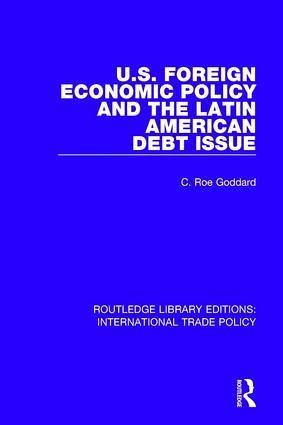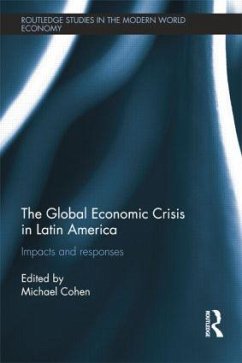
U.S. Foreign Economic Policy and the Latin American Debt Issue
Versandkostenfrei!
Versandfertig in 1-2 Wochen
32,99 €
inkl. MwSt.

PAYBACK Punkte
16 °P sammeln!
This reissue (1993) examines US policy toward the Latin American debt crisis, 1982-5. Reagan maintained the problem as a private creditor/debtor issue, avoiding internationalization of the problem. With the election of Bush government policy changed, and this book analyses the different approaches, and the successes and failures of their policies.














